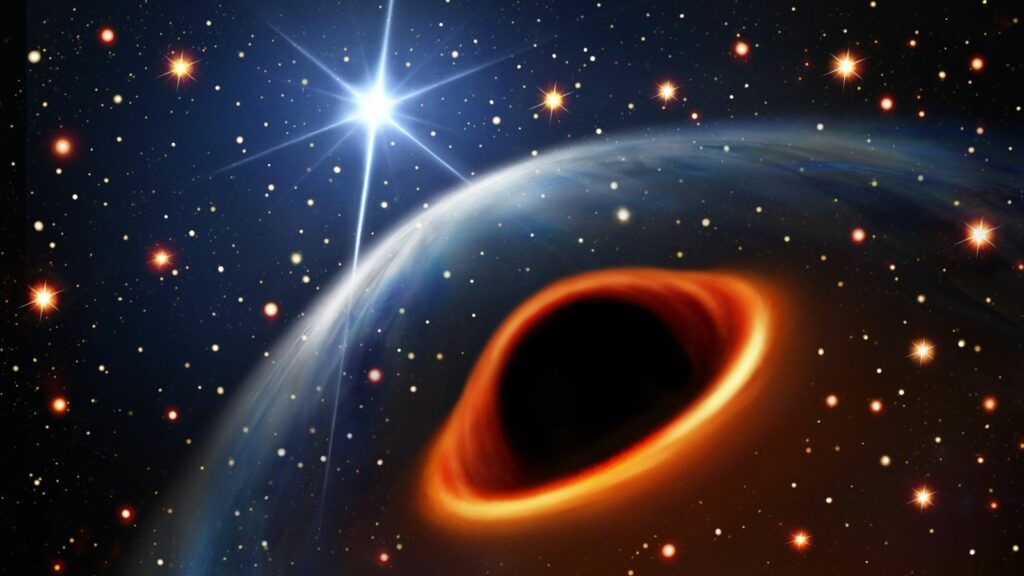Mysterious new object found in Milky Way that could be black hole-star pairing | Science & Tech News

A new and mysterious object has been discovered in the Milky Way and could be a combination of a black hole and a special type of star.
Found 40,000 light years away in our galaxy, the potentially new type of space entity appears to have unique qualities.
It falls within what researchers call the ‘black hole mass gap’ – making it a rare and little understood formation.
It was found orbiting a millisecond pulsar – a neutron (collapsed) star that pulses radiation and spins hundreds of times a second – and could be the first pulsar-black hole pairing ever seen.
Such a merger could allow new tests of Einstein’s general theory of relativity and opens the door to further study of black holes.
Ben Stappers, the UK project lead, said a pulsar-black hole system will be an “important target for testing theories of gravity”.
If it is a heavy neutron star, meanwhile, it “will provide new insights in nuclear physics at very high densities”, he added.
When neutron stars – the ultra-dense remains of a dead star – collect too much mass, they collapse; but what comes after this is subject to debate, with some believing they could become black holes.
It is thought the total mass required for a neutron star to collapse is 2.2 times the mass of the sun.
The MeerKAT radio telescope
But the lightest black holes created by these stars are far larger, at about five times more massive than the sun.
The difference in weight gives rise to what is known as the ‘black hole mass gap’ – and the nature of objects in this mass gap is unknown, which is why there is hope this latest discovery could help.
It’s believed the find could be the most massive neutron star ever found, the lightest black hole or some new exotic star variant.
Whatever the answer, scientists believe they have uncovered something that will help to probe the properties of matter under the most extreme conditions in the universe.
Read more:
Scientists discover oldest black hole ever
Astronomers produce significant star cluster image
The discovery was made while observing a large cluster of stars known as NGC 1851 – a dense group of stars known as a globular cluster – located in the southern constellation of Columba, using the MeerKAT telescope.
Astronomers say it is so crowded that the stars can disrupt orbits and, in the most extreme cases, collide.
They believe a collision between two neutron stars may have created the massive object that now orbits the millisecond pulsar.
The researchers hail from a number of institutions, including The University of Manchester and the Max Planck Institute for Radio Astronomy in Germany.
The findings are published in the Science journal.
Recent Posts
- Firms need ‘customer stickiness’ to thrive amid AI-driven disruption
- Hanny: Hidupmu untuk Matimu, Banyaklah Bersyukur.
- Kuoni extends out-of-date range flights to more destinations
- Fred Olsen Cruise Lines ship makes Newcastle debut
- Agent Diary: Wildlife experiences are a big draw – be sure to sell only the ethical ones







Recent Comments